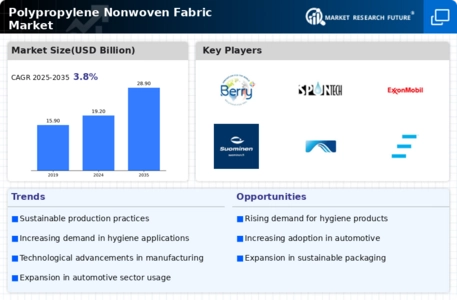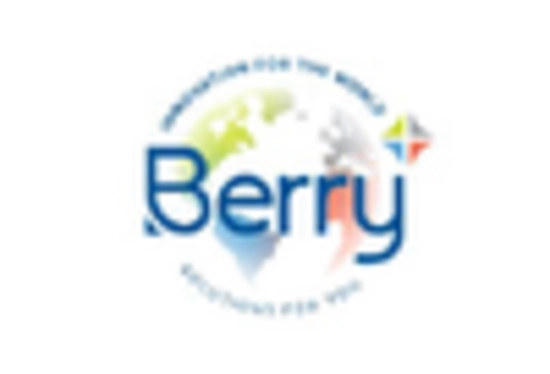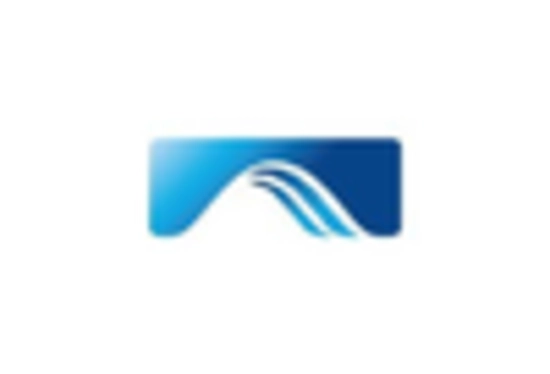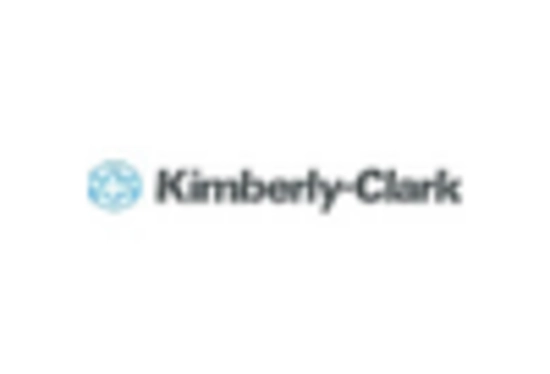Growth in the Automotive Sector
The automotive industry is experiencing a notable shift towards lightweight materials, which is positively impacting the polypropylene nonwoven fabric market. This fabric is increasingly being used in automotive interiors, including seat covers, headliners, and insulation materials. The trend towards fuel efficiency and reduced emissions has led manufacturers to seek lighter alternatives, and polypropylene nonwoven fabric fits this requirement well. The market for automotive applications is expected to grow significantly, with projections indicating a compound annual growth rate of around 5% over the next few years. As automotive manufacturers continue to innovate and prioritize sustainability, the demand for polypropylene nonwoven fabric is likely to rise, thereby enhancing its market presence.
Rising Demand in Hygiene Products
The increasing awareness regarding health and hygiene is driving the demand for polypropylene nonwoven fabric in the hygiene products sector. This fabric is extensively utilized in the production of items such as diapers, feminine hygiene products, and adult incontinence products. The polypropylene nonwoven fabric market is projected to witness a growth rate of approximately 6% annually, fueled by the rising population and the growing emphasis on personal hygiene. Manufacturers are increasingly adopting this fabric due to its lightweight, breathable, and absorbent properties, which are essential for hygiene applications. As consumers become more health-conscious, the demand for high-quality hygiene products is likely to escalate, further propelling the growth of the polypropylene nonwoven fabric market.
Expansion in the Construction Industry
The construction industry is witnessing a surge in the use of polypropylene nonwoven fabric, particularly in geotextiles and insulation applications. This fabric offers excellent durability and resistance to environmental factors, making it suitable for various construction needs. The polypropylene nonwoven fabric market is anticipated to benefit from the increasing investments in infrastructure development and urbanization trends. With a projected growth rate of approximately 4% in the construction sector, the demand for nonwoven fabrics is expected to rise as builders seek efficient and cost-effective solutions. The versatility of polypropylene nonwoven fabric in construction applications positions it as a key player in the market, potentially leading to increased adoption in future projects.
Increasing Use in Medical Applications
The medical sector is increasingly adopting polypropylene nonwoven fabric due to its beneficial properties, such as biocompatibility and barrier protection. This fabric is widely used in surgical gowns, masks, and other medical textiles, which are essential for maintaining hygiene and safety in healthcare settings. The polypropylene nonwoven fabric market is projected to experience a growth rate of approximately 8% as healthcare providers prioritize the use of high-quality materials to ensure patient safety. The ongoing advancements in medical technology and the rising demand for disposable medical products are likely to further drive the adoption of polypropylene nonwoven fabric. This trend underscores the fabric's critical role in enhancing healthcare outcomes and its potential for continued growth in the medical applications sector.
Innovations in Nonwoven Fabric Technology
Technological advancements in the production of polypropylene nonwoven fabric are significantly influencing the market landscape. Innovations such as spunbond and meltblown technologies are enhancing the performance characteristics of these fabrics, making them more appealing for various applications. The polypropylene nonwoven fabric market is likely to see a boost in demand as manufacturers leverage these technologies to create fabrics with improved strength, filtration capabilities, and sustainability features. As industries increasingly prioritize high-performance materials, the adoption of advanced nonwoven technologies is expected to grow, potentially leading to a market expansion of around 7% in the coming years. This trend indicates a promising future for the polypropylene nonwoven fabric market.


















Leave a Comment